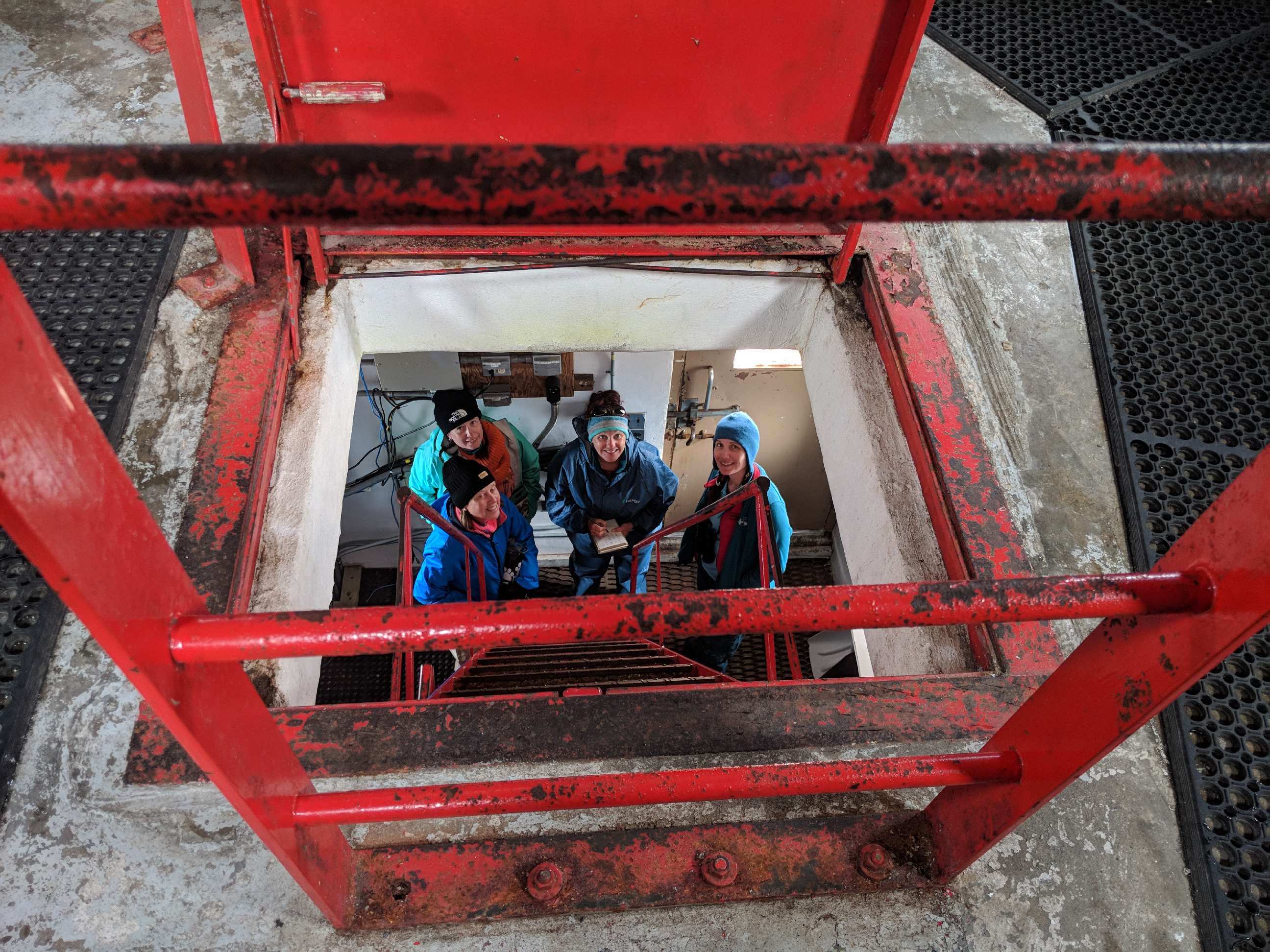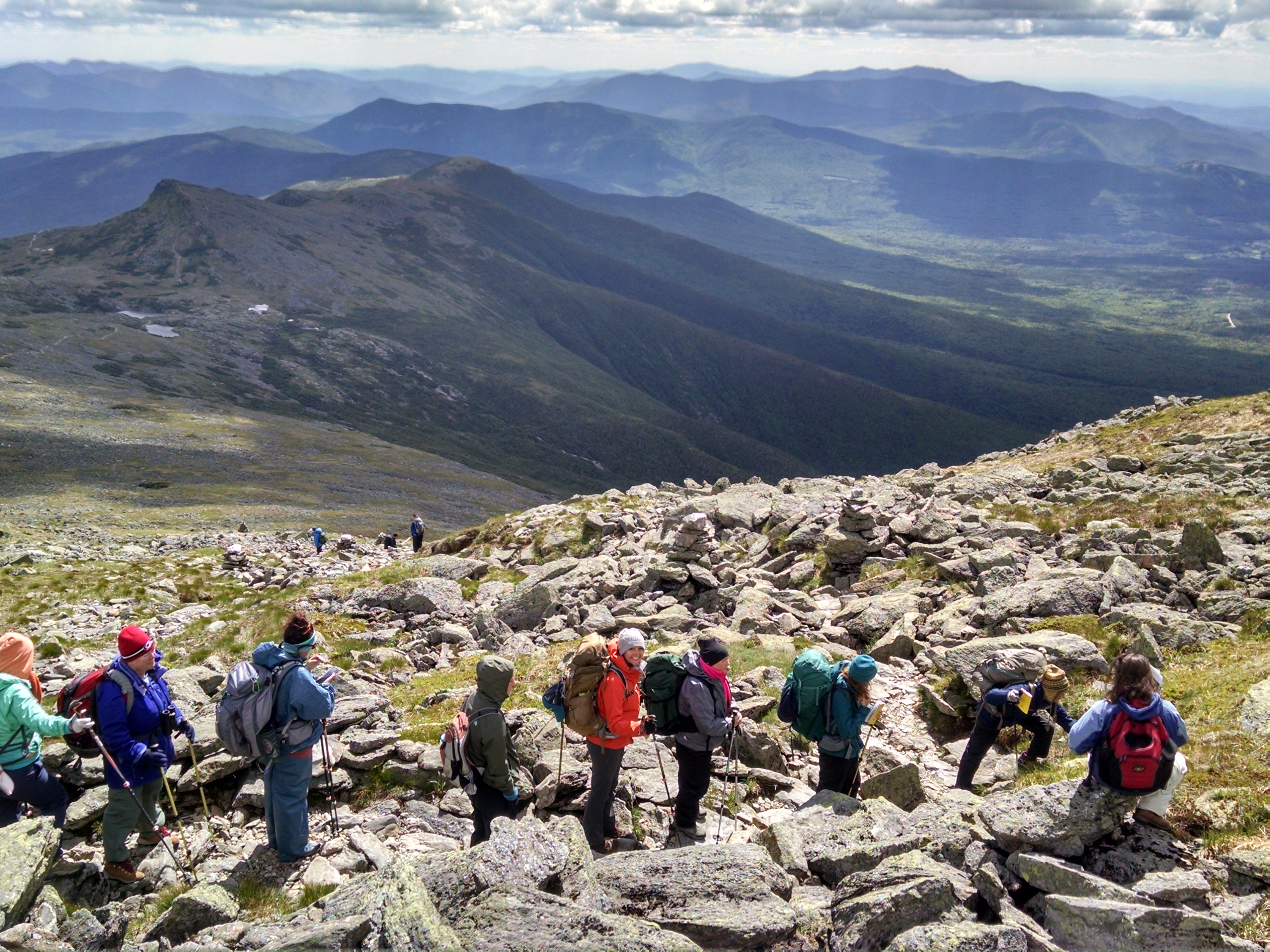Today was a day of surprises. We ascended Mount Washington this morning, and were scheduled for a visit to the Alpine Garden. This was not your ordinary garden.

The Alpine Garden (almost): not many readily visible flowers unless you look very closely! Renee holds a Snickers bar with a wrapper that says “cray cray” which pretty much epitomized the weather conditions we experienced today.
Instead of 85 degrees and sunshine, this garden thrives in 45 degrees and lots of wind. Instead of a lush meadow full of flowers, we found rocks. Lots of rocks. But if we looked closer, we could see some tiny, tenacious, treasures — miniature alpine flowers like cranberry (which we sampled, and we can verify that they tasted like craisins), sandwort and Diapensia (a relative of our pixie moss). Mostly it was very cold, very windy and very unexpected.

The summit of Mount Washington – site of the highest human-recorded land wind speed — 231 mph.

Looking down from the inside of the Observatory tower.
Once at the top, we got treated to a behind-the-scenes tour of the Mount Washington Observatory. It was so neat to see how all of our data that appears at the click of a mouse is painstakingly collected by lots of instruments and dedicated souls.
We also met the observatory cat named Marty!
On our way down, with the help of AMC Air Quality Scientist Georgia Murray and her intern Lauren, we learned about some of the citizen science monitoring that is happening with the alpine flowers. We will be able to help collect observations the next few days. Documenting the phenology (timing of plant stages) helps keep a record of changes in timing as the climate warms.

AMC Air Quality Scientist Georgia Murray (with her back to the camera in a red backpack) teaches us about monitoring phenology of alpine wildflowers. In the distance you can see the white roof of our destination hut, Lakes of the Clouds.
Though it wasn’t far, the rocky, downhill trail was a challenge for many of us, but we helped each other along the way and made it to Lakes of the Clouds Hut safely in time for dinner!
Tomorrow we have our longest-mileage day ahead of us, and we don’t anticipate having cell signal to post the blog until Wednesday.
We will fall asleep tonight after a spectacular sunset with the fading glow on the horizon.

Sunset from Lakes of the Clouds hut.

2 COMMENTS
Brent Curtis
6 years ago
Is the observatory to observe weather or do they have a telescope too? Ms. Michalec, did your practice hiking prepare your for climbing the mountain? Did you get tired going up the mountain?
Cheryl
6 years ago
The observatory is just for weather. They do not observe the stars in outer space. They use the instruments to observe the troposphere. There is a live webcam on their website. Today it is raining with high winds. We are no longer on the mountain. My practice hiking helped me so much. I was not prepared for the rocks and wind. The wind can make it difficult to keep your balance. I used my hiking poles to keep from falling.